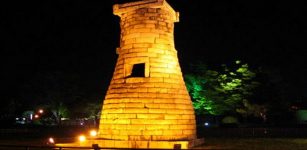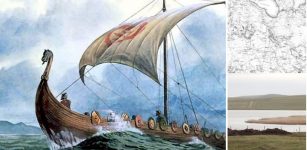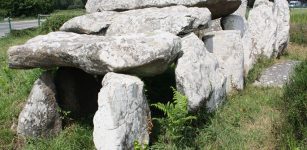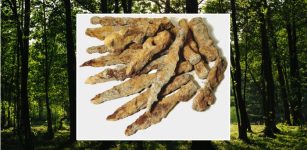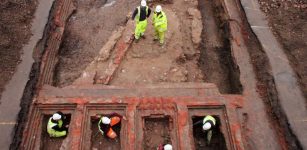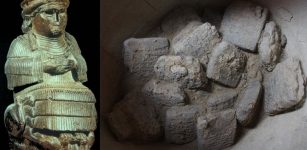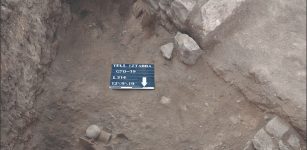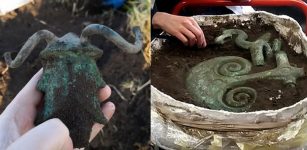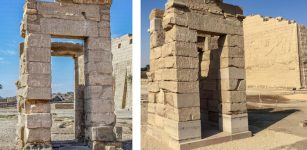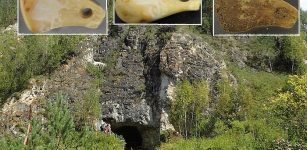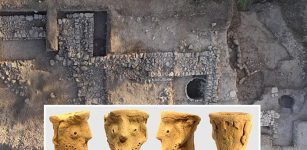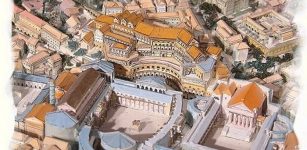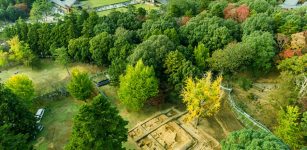Jomon Period: Triangle-Shaped Stone Artifact Depicting Human Face Found For The First Time In Japan
AncientPages.com - The first-known example of a painted stone painted depicting a human face, has been discovered by Japanese archaeologists.
The artifact is dated to the Jomon Pottery (8000 BC – 300B C) and was buried beneath the ground where a pit house once stood, writes The Asahi Shimbun.
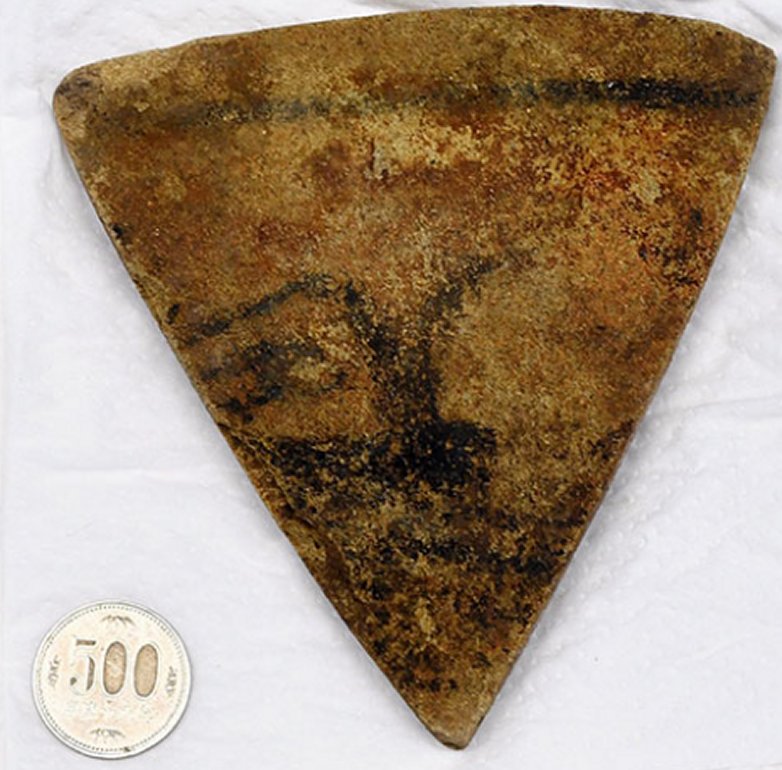
A piece of stone depicting a human face discovered in Kikonai, Hokkaido (Yoshinori Toyomane). Image via www.asahi.com
The Jomon Pottery Culture was rich in tools and jewelry made from bone, stone, shell, and antler; pottery figurines and vessels; and lacquerware. The culure existed during the very long period of time from 10,500 BC to 300 BC and was mostly associated with pottery decorated with cord-pattern (jomon) impressions or reliefs.
The stone had been flattened and shaped into a triangle, measures about four inches per side. Yasushi Kosugi of Hokkaido University explained that the face image consists of lines forming a nose and eyebrows, oval eyes, and an open, oval mouth.
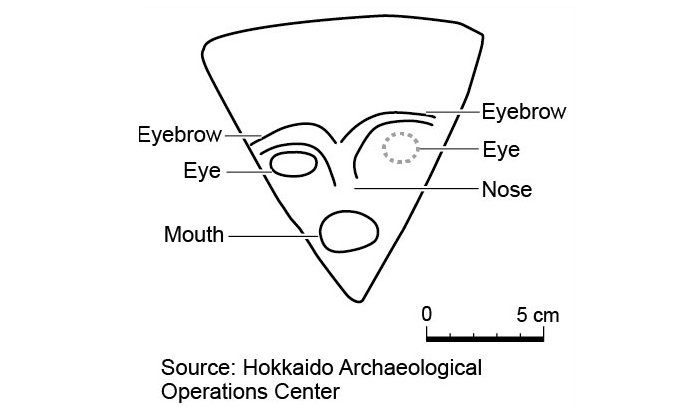
A piece of stone depicting a human face discovered in Kikonai, Hokkaido (Yoshinori Toyomane).
Image via www.asahi.com
“The find is extremely precious in that it could help ascertain what the spiritual culture in the mid-Jomon period was like,” said Yasushi Kosugi, a Jomon culture professor at Hokkaido University.
Archaeologists say the stone fragment itself is dated to the latter half of the mid-Jomon period (4,300 years ago) and the place of its discovery is part of the Koren five archaeological sites in Kikonai, in Oshima Subprefecture, south-west of Hokkaido.
Measuring 12 to 13 cm per side and 1.4 cm thick, the stone, flattened with a whetstone or other tools, is shaped like an inverted triangle.
While a horizontal line is drawn near the top side with a black pigment, an ellipse that apparently represents an eye and lines forming eyebrows and the nose are also painted on it.
For now, it is unknown how the object was used and for what purposes. It may have been used for religious services or other purposes in ancient times.
In earlier excavations, archaeologists unearthed a painting of a human body dated to the same period; however, an image of a face, has never been discovered anywhere in Japan, according to The Asahi Shimbun.
AncientPages.com
Expand for referencesReferences:



